I was born in Sydney but my family moved to Tasmania when I was two years old. I subsequently grew up and did all my schooling (including university) in Tasmania, where I learned a certain amount about the Aboriginal history of the island. I certainly wouldn’t call myself an expert though, and when I recently heard about the Blak Led tours of Hobart I thought it would be interesting to take part as a local, but one who isn’t Aboriginal and probably could still learn a lot.
On our most recent trip back to Tassie Dennis and I took part in the Takara Nipaluna Walking Tour and both found it very interesting. Even as someone who grew up in Tasmania, I learned a lot, and I think it’s a must-do tour for any visitors to the state, as well as other locals who want a better understanding of Aboriginal history. In this post, I’m sharing everything you need to know about the Blak Led Takara Nipaluna Walking Hobart Tour including what it is, what you will see/learn and why I think you should do one yourself!
NOTE
This was NOT a sponsored post, I paid the full cost to join this tour because I wanted to experience it (and was happy to support a local Aboriginal business) and now I am giving you my honest opinions on why I think all visitors to Hobart should also do a Takara Nipaluna Walking Hobart Tour!
What is the Takara Nipaluna Walking Hobart Tour?
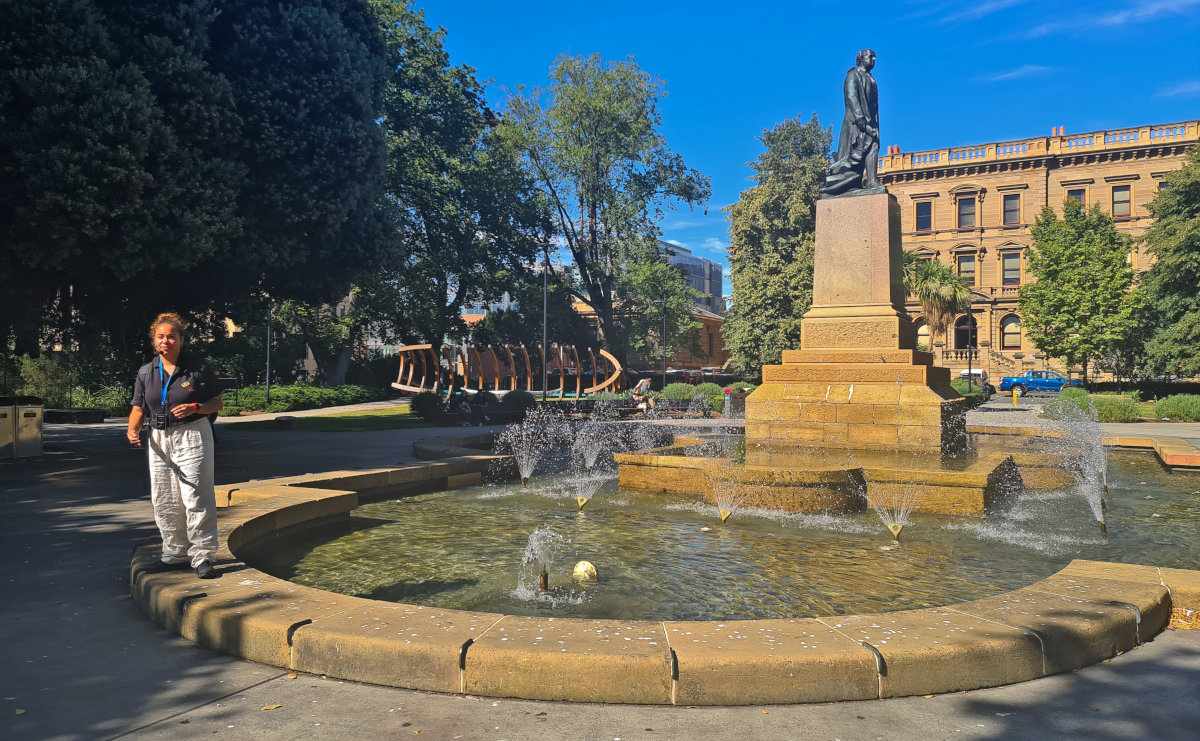
Takara Nipaluna, which means Walking Hobart in Palawa Kani, is a tour of Hobart told from the perspective of Tasmanian Aboriginal people. It’s one of a variety of tours offered by Blak Led Tours Tasmania, a “business that focuses on the representation of Tasmanian Aboriginal stories through guided tours and story-telling projects across Lutruwita/Tasmania.” Blak Led Tours was founded by Nunami Sculthorpe-Green, a palawa and warlpiri woman born and raised in Nipaluna/Hobart.
This is the only Aboriginal-led tour of Nipaluna/Hobart, so it’s a must-do if you want to know more about the original inhabitants of the island and city. It’s not like regular walking tours where you are taken to the main sights, but a tour that walks you through some of the pivotal moments in Tasmanian history, from the point of view of its original inhabitants. You will still get an overview of the city and see places you’ll want to explore more later, but this tour is all about Aboriginal experiences and stories.
What a Takara Nipaluna Walking Hobart Tour is Like
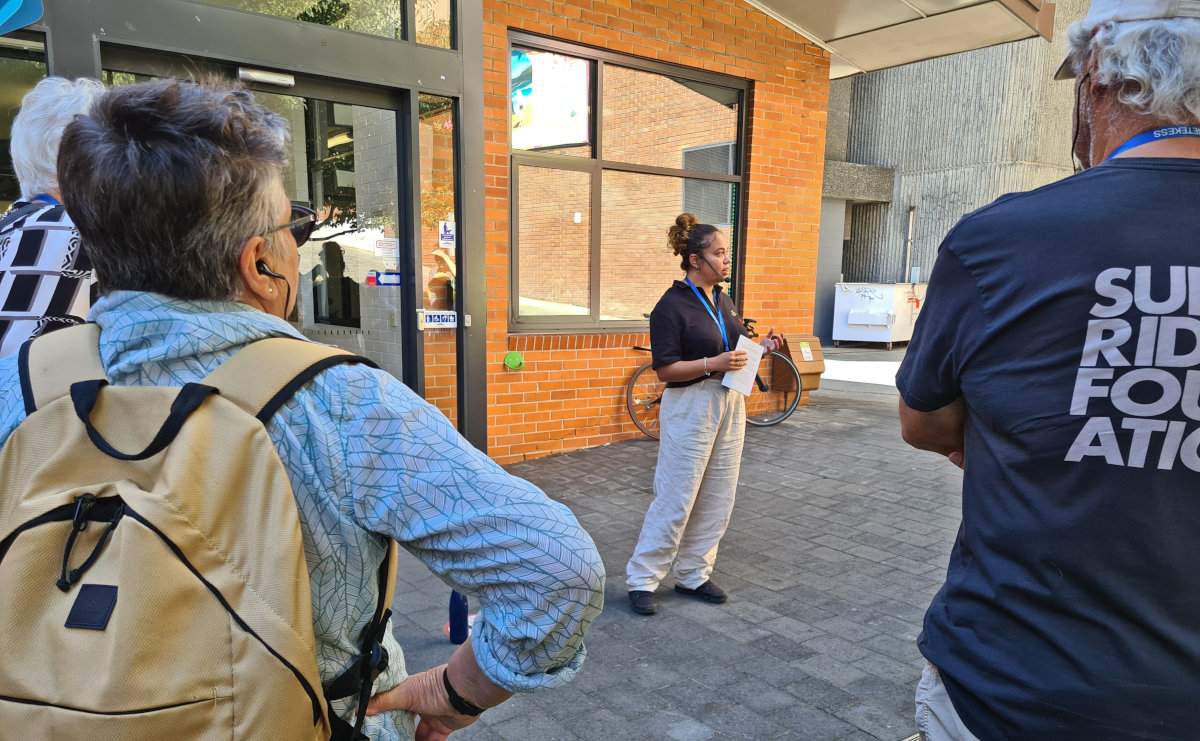
The Takara Nipaluna Walking Hobart tour starts outside Mathers House in Mathers Place, which is in the centre of Hobart. If you’re travelling in by car then the Centrepoint car park is probably the most convenient spot to park, although you will need to pay for parking. All tour participants are provided with a little device to plug headphones into so they can hear Nunami at all times. Earplugs are provided but you can also bring your own so long as it has a 3.5mm headphone jack (bluetooth doesn’t work).
The walk follows the route taken in 1832 by members of the Aboriginal resistance, retracing their steps as they progressed to the old Government House to negotiate an end to the Black War. Of course, nearly all the places on the tour are now very different to how they would have looked back then, but Nunami does a great job of describing how it would have looked in 1832, the background of what had led to that walk and what happened afterwards.
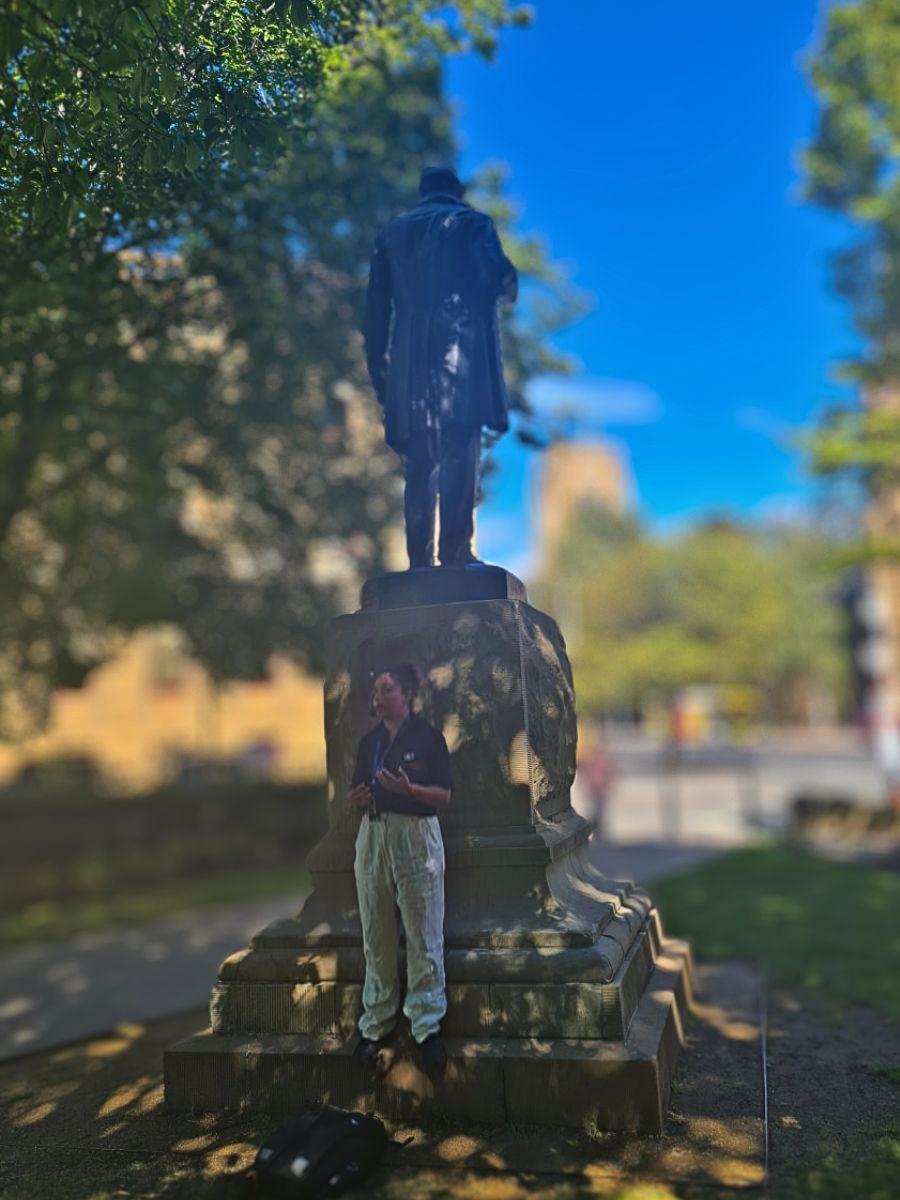
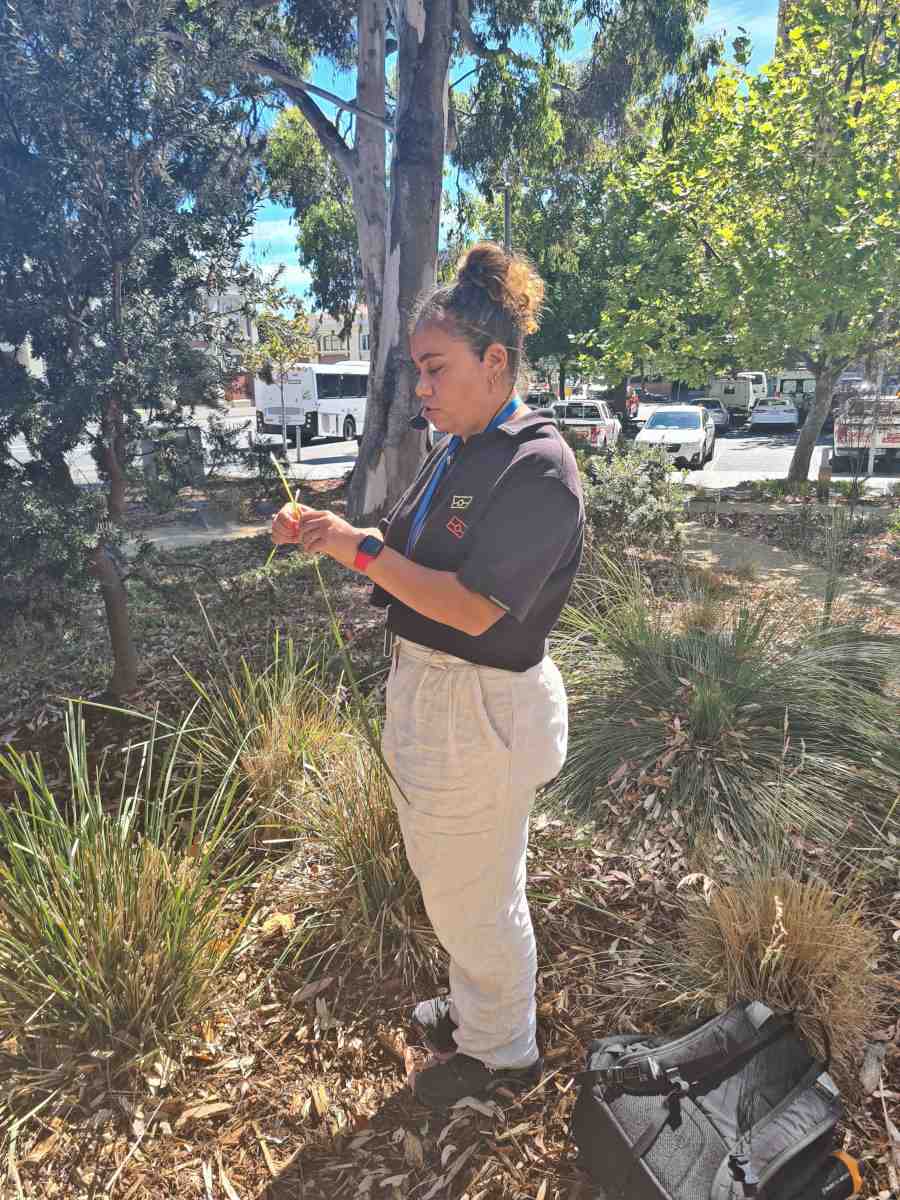
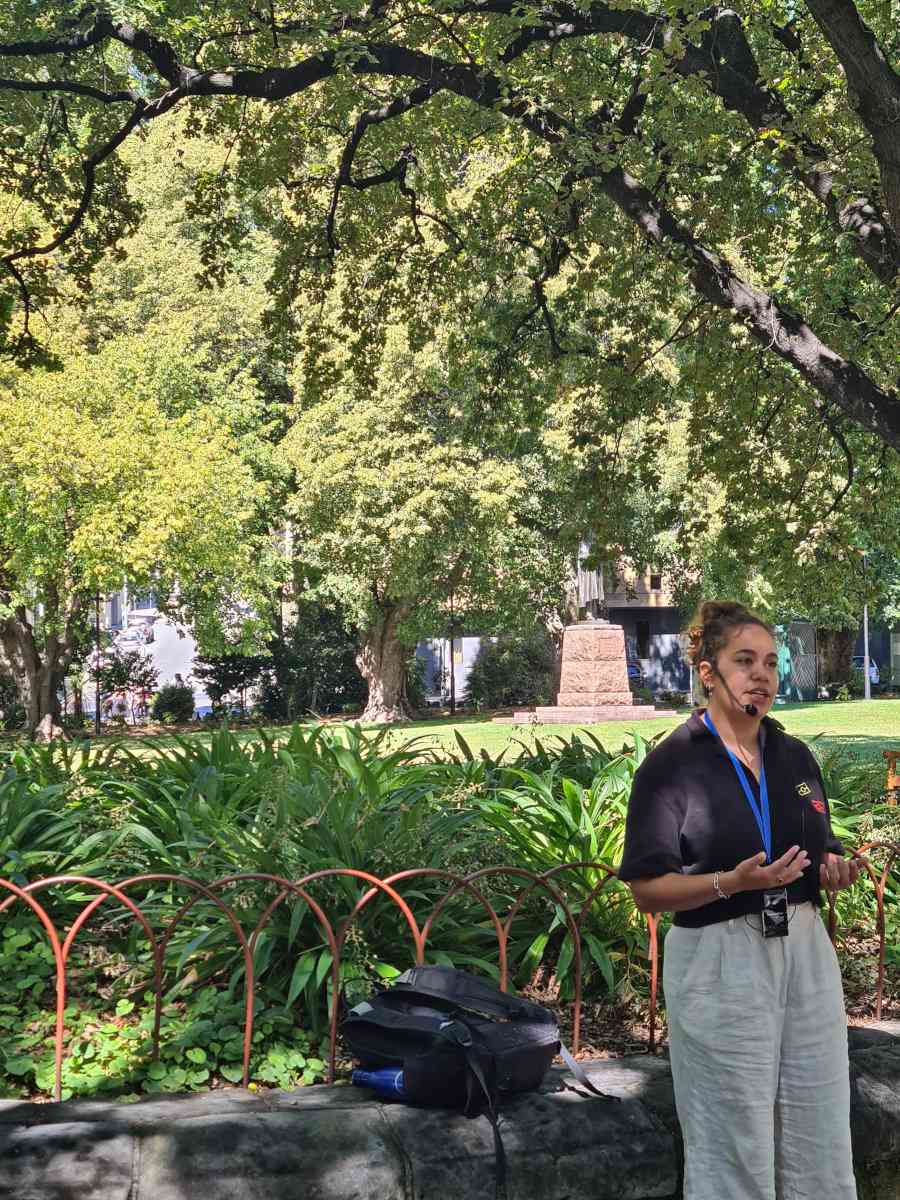
This is a very relaxed tour, there are plenty of stops where you can sit down while you listen to Nunami, including a toilet break about halfway. As well as learning about Aboriginal history you’ll also get a bit of an overview of some of the main sights (and shopping areas!) in Hobart, and it finishes next to Salamanca which is one of the best areas to explore afterwards. There are also plenty of places to eat if you want to have lunch after the tour.
The walk is mostly flat or downhill, there were a couple of places with stairs but they can also be avoided easily and the toilet is fully accessible. Hobart can get very cold, wet and windy but we were lucky enough to get to do our tour in the middle of summer on a gorgeous summer’s day. Just make sure you bring layers and/or an umbrella if you’re not doing it on a warm day!
Why You Should Do a Takara Nipaluna Walking Hobart Tour
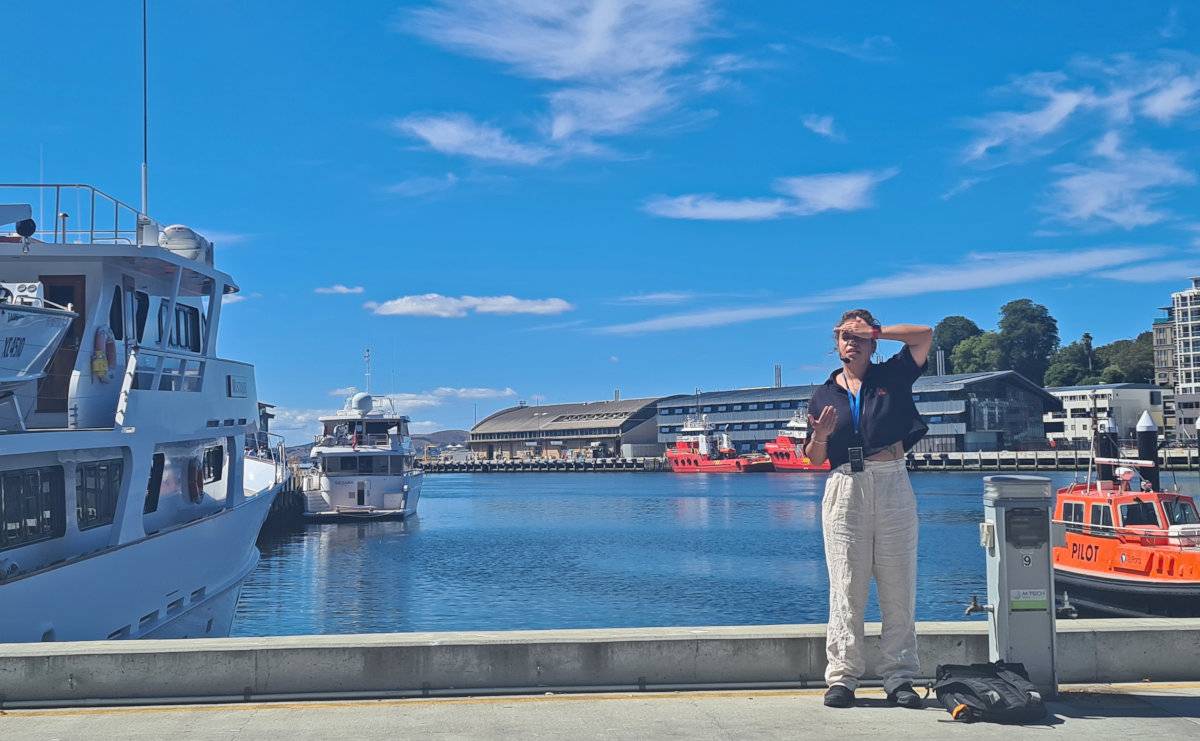
The Takara Nipaluna tour is a great way to introduce yourself to the Aboriginal history of Lutruwita/Tasmania and Nipaluna/Hobart, while also enjoying a leisurely stroll through the city centre. Even locals are sure to learn things they didn’t know before about the original inhabitants of Tasmania, and about the city of Hobart itself. This is also the only tour of its kind in Hobart, so I think it’s a must-do as so much of the information around Hobart is only focused on the colonial history of the city and island. You’ll also be hearing this history from a local Palawa woman and she’s very good at what she does!
Key Takeaways from My Experience Doing a Takara Nipaluna Tour
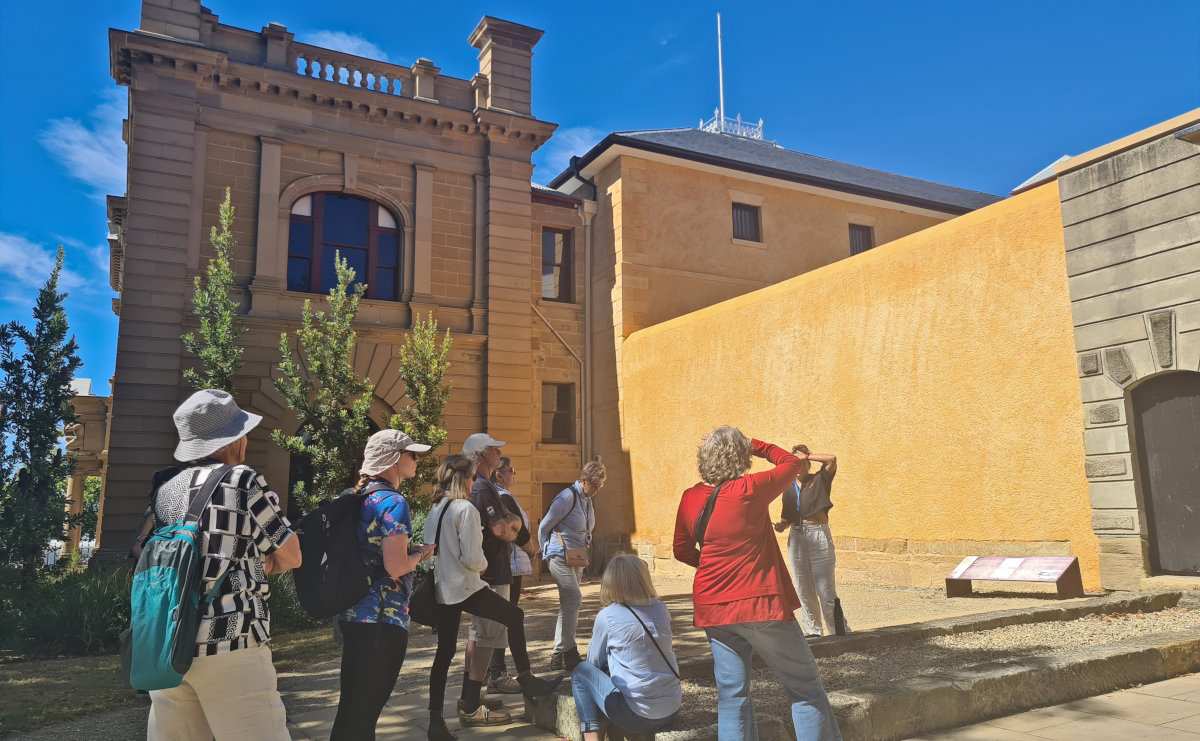
As I’ve mentioned, while I knew some of the Aboriginal history of Lutruwita/Tasmania, I still learned a lot on this tour. Some of the information that stood out the most to me were the following points:
- Palawa Kani: this is the name given to the re-constructed Aboriginal language used throughout Tasmania. So much Tasmanian Aboriginal culture was destroyed by the invaders that it’s taken years of painstaking work to try and restore the language.
- Aboriginal place names for Lutruwita/Tasmania, such as Nipaluna/Hobart and Kunanyi/Mount Wellington were gifted to us by the local Palawa people.
- The Extinction Myth: many people (including myself) grew up learning that Tasmanian Aboriginal people had been wiped out by the invaders. This is not true, as their descendants are still around today, like Nunami, but it’s a pervasive myth.
- The financial impact of the war: Nunami pointed out that most of the oldest and most beautiful colonial buildings in Hobart were built after the negotiations that ended the Black War. This was because the war was so costly that once it was over, Hobart had enough money to start a building boom. Just goes to show how fierce those resistance fighters were!
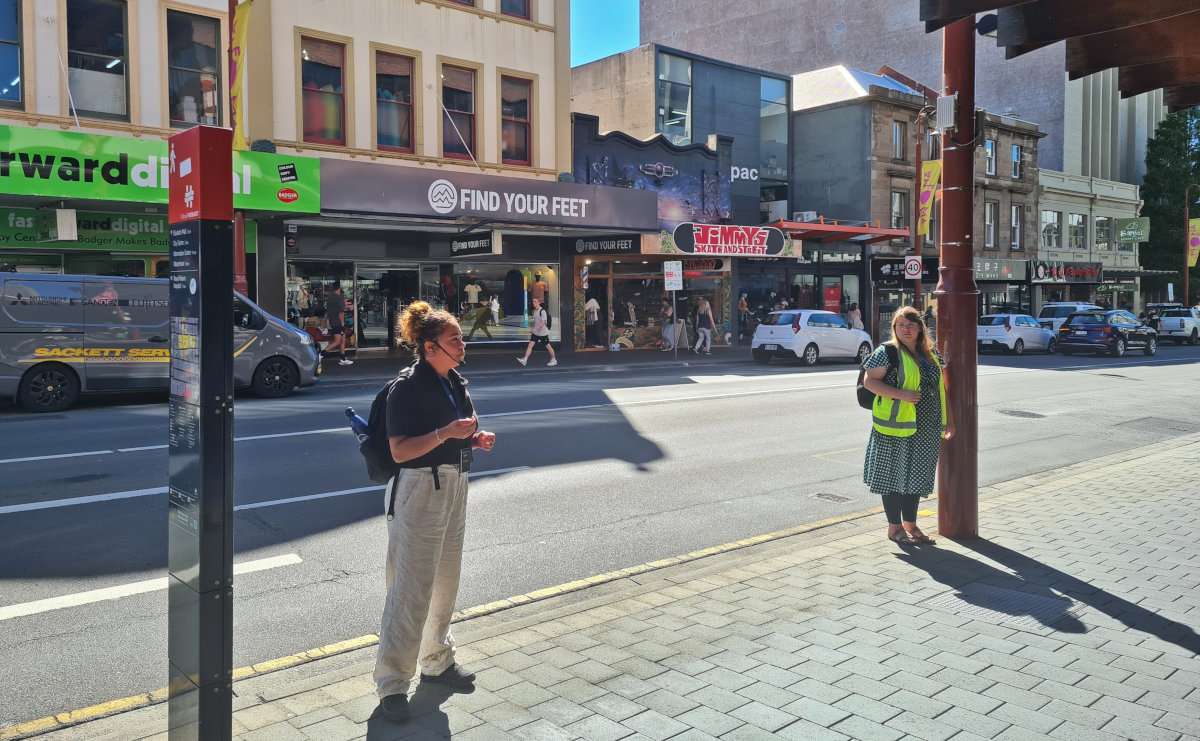
If you want to learn more about the Aboriginal history of Nipaluna/Hobart and Lutruwita/Tasmania, check out the following sites:
- Tasmanian Aboriginal Centre: This website has a good overview of Palawa Kani along with other campaigns and programs.
- TMAG Hobart: The Tasmanian Museum and Art Gallery has an excellent exhibition on the Aboriginal History of Lutruwita/Tasmania and Nipaluna/Hobart that’s definitely worth checking out. The TMAG is also free to visit.
- QVMAG Launceston: The Queen Victoria Museum and Art Gallery in Launceston has also got a really good exhibition about the Kanamaluka/Tamar Estuary including how the local Aboriginal people lived before the invasion. Like the TMAG the QVMAG is completely free.
- Other tours/experiences: Make sure you also check out the other tours and experiences offered by Blak Led Tours, including a free self-guided tour of Aboriginal art in Nipaluna/Hobart.
Pin Me!
Have you ever done a Blak Led tour in Lutruwita/Tasmania or an Indigenous-led tour elsewhere in the world? Let me know about it in the comments or pin one of these if you’re planning to visit Nipaula/Hobart and want to experience Takara Nipaluna yourself!
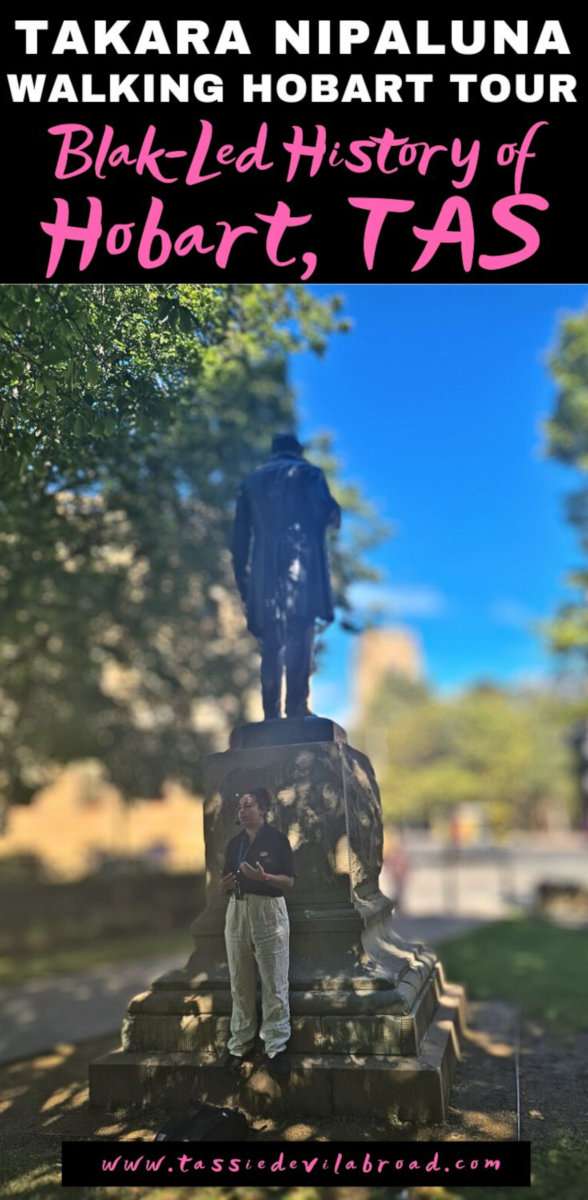

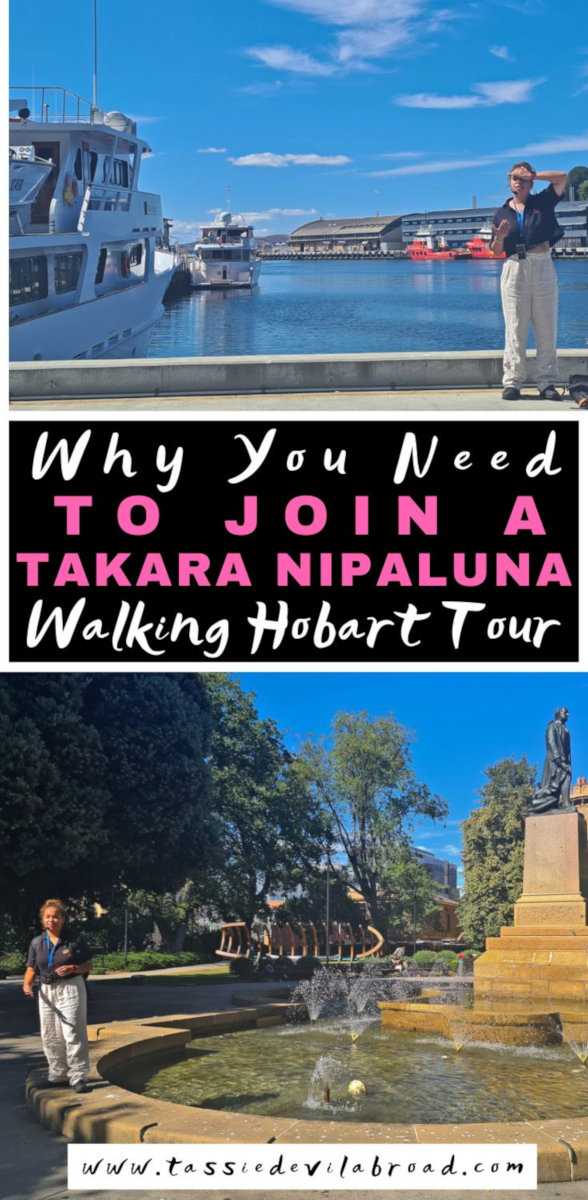
Disclaimer
All information is true and correct at the time of publishing but I cannot be held responsible for changes in opening times and prices or businesses closing in the meantime. I always endeavour to keep my posts up to date but also encourage you to double-check the official website of an attraction for information on when it is open, how much it costs etc.
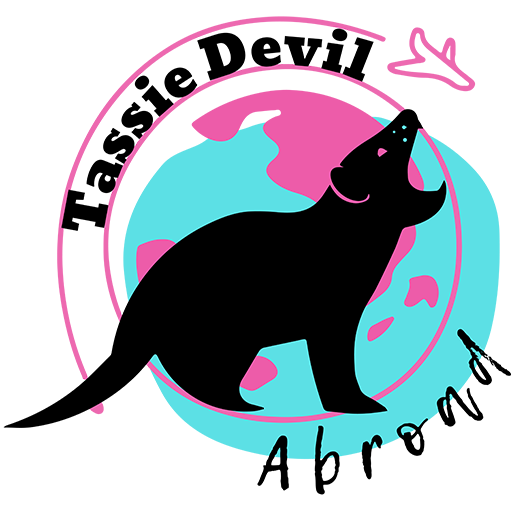
[…] your first time in Hobart, as it passes many of the main sights along the way. You can read my full review of the Takara Nipaluna Walking Hobart Tour here and check out the official Blak Led Tours website […]